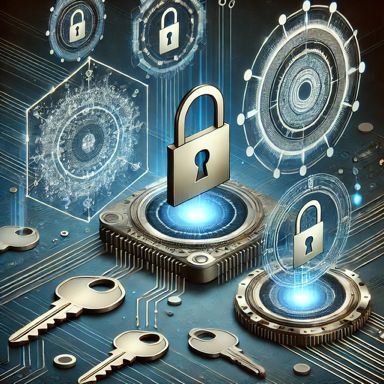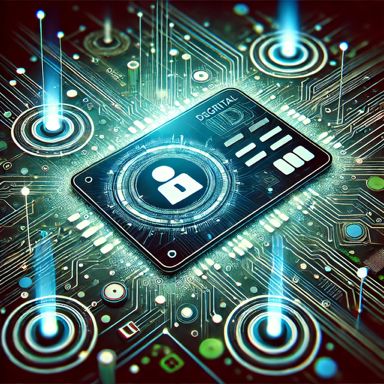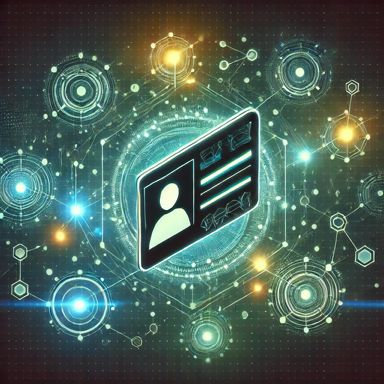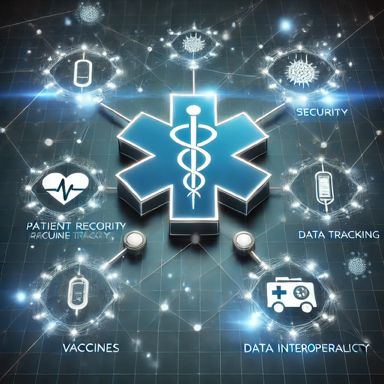7/7
Next, we’ll explore how decentralized identity is already transforming industries in Part 3. 👇
16.01.2025 20:41 — 👍 6 🔁 0 💬 0 📌 0
6/7
Together, these technologies create a self-sovereign identity system that is secure, private, and user-centric.
16.01.2025 20:41 — 👍 6 🔁 0 💬 1 📌 0
5/7
Interoperability Standards:
Standards like DIDComm and W3C specifications ensure your decentralized identity works seamlessly across platforms.
16.01.2025 20:41 — 👍 6 🔁 0 💬 1 📌 0
4/7
Zero-Knowledge Proofs (ZKPs):
ZKPs allow you to prove something is true (e.g., your age or income level) without sharing any extra information. Privacy + trust = ✔️
16.01.2025 20:41 — 👍 1 🔁 0 💬 1 📌 0
3/7
Verifiable Credentials (VCs):
Think of VCs as digital certificates issued by trusted entities (e.g., universities, banks). These are cryptographically signed and can be verified without revealing all your details.
16.01.2025 20:41 — 👍 1 🔁 0 💬 1 📌 0
2/7
Public Key Infrastructure (PKI):
DID uses cryptographic keys for secure identity verification. Your private key is used to sign data, and your public key proves it’s yours—secure and tamper-proof.
16.01.2025 20:41 — 👍 1 🔁 0 💬 1 📌 0

Digital Identity in the Blockchain Era
Part 2: Technologies Behind Decentralized Identity
1/7
DID relies on blockchain technology to function. Here’s a breakdown of the core components that make it possible. 🧵👇
16.01.2025 20:41 — 👍 1 🔁 0 💬 1 📌 0
7/7
But how does it work? In Part 2, we’ll dive into the technologies powering decentralized identity. 👇
14.01.2025 15:39 — 👍 1 🔁 0 💬 0 📌 0
6/7
DID has the potential to bridge the gap for the unbanked and provide access to essential services like banking, healthcare, and education. 🌍
14.01.2025 15:39 — 👍 1 🔁 0 💬 1 📌 0
5/7
Example: Instead of sharing your full ID to prove your age, a decentralized identity can confirm “Yes, 18+” without exposing extra details.
14.01.2025 15:39 — 👍 1 🔁 0 💬 1 📌 0
4/7
DID is built on principles of:
• Ownership: You control your identity and data.
• Privacy: Share only the necessary information.
• Interoperability: Use your identity across platforms securely.
14.01.2025 15:39 — 👍 0 🔁 0 💬 1 📌 0
3/7
Blockchain introduces decentralized identity (DID). It empowers individuals to control their data without relying on centralized entities.
14.01.2025 15:39 — 👍 0 🔁 0 💬 1 📌 0
2/7
Traditional digital identity systems rely on centralized databases managed by governments, corporations, or institutions. These systems are prone to:
• Data breaches
• Identity theft
• Limited access for the unbanked
14.01.2025 15:39 — 👍 0 🔁 0 💬 1 📌 0

Digital Identity in the Blockchain Era
Part 1: What Is Digital Identity?
1/7
Digital identity is how you represent yourself online, from social media profiles to online banking credentials. But what happens when you lose control of it? Let’s explore. 🧵👇
14.01.2025 15:39 — 👍 0 🔁 0 💬 1 📌 0
7/7
Blockchain is reshaping how we think about identity, enabling a more secure, private, and accessible world. Which of these applications excites you the most? Let’s discuss! 💬
13.01.2025 15:59 — 👍 0 🔁 0 💬 0 📌 0
6/7
The result?
✅ More control over data
✅ Enhanced privacy
✅ Easier access to global services
13.01.2025 15:59 — 👍 0 🔁 0 💬 1 📌 0
5/7
By using Zero-Knowledge Proofs (ZKPs), SSI ensures privacy. You can prove eligibility (e.g., age) without revealing extra details (e.g., birthdate). 🔒
13.01.2025 15:59 — 👍 0 🔁 0 💬 1 📌 0
4/7
SSI also enables access to services for the unbanked. Projects like uPort give people without official documents a secure digital identity. 🌍
13.01.2025 15:59 — 👍 0 🔁 0 💬 1 📌 0
3/7
In financial services, SSI makes KYC (Know Your Customer) easier and more secure. You can share only the necessary info without exposing sensitive data. 🏦
13.01.2025 15:59 — 👍 0 🔁 0 💬 1 📌 0
2/7
Traditional identity systems rely on central authorities (e.g., governments, banks). Blockchain allows self-sovereign identity (SSI), letting individuals own and manage their credentials.
Example: Digital passports that you control, reducing identity theft risks.
13.01.2025 15:59 — 👍 0 🔁 0 💬 1 📌 0

Real-World Blockchain Use Cases
Part 3: Decentralized Identity
1/7
Decentralized identity puts YOU in control of your personal data, a game-changer for online privacy and security. Here’s how it works. 🧵👇
13.01.2025 15:59 — 👍 0 🔁 0 💬 1 📌 0
7/7
Healthcare is just one area where blockchain makes a difference. Next, let’s explore decentralized identity. 👇
12.01.2025 18:04 — 👍 0 🔁 0 💬 0 📌 0
6/7
The key benefits?
✅ Enhanced data security
✅ Reduced admin overhead
✅ Improved patient outcomes
12.01.2025 18:04 — 👍 0 🔁 0 💬 1 📌 0
5/7
Blockchain even aids organ donation. Transparent registries ensure fair allocation and track organs across the system. 💔➡️💚
12.01.2025 18:04 — 👍 0 🔁 0 💬 1 📌 0
4/7
Clinical trials benefit too! Blockchain provides transparency, preventing tampering with data or results. It builds trust in scientific research. 🔬
12.01.2025 18:04 — 👍 0 🔁 0 💬 1 📌 0
3/7
In vaccine distribution, blockchain ensures doses are stored and transported under proper conditions, minimizing wastage and fraud. 💉
12.01.2025 18:04 — 👍 0 🔁 0 💬 1 📌 0
2/7
Patient records are often siloed across providers. Blockchain can securely unify these records, ensuring accurate and up-to-date information wherever you go. 🏥
12.01.2025 18:04 — 👍 0 🔁 0 💬 1 📌 0

Real-World Blockchain Use Cases
Part 2: Healthcare Revolution
1/7
Blockchain is transforming healthcare by solving issues like data security, interoperability, and supply chain tracking. Let’s explore! 🧵👇
12.01.2025 18:04 — 👍 0 🔁 0 💬 1 📌 0
10/10
Next, let’s dive into healthcare. How is blockchain saving lives? 👇
11.01.2025 19:15 — 👍 0 🔁 0 💬 0 📌 0
9/10
By providing trust and transparency, blockchain revolutionizes global supply chains, making them more reliable and efficient.
11.01.2025 19:15 — 👍 0 🔁 0 💬 1 📌 0



